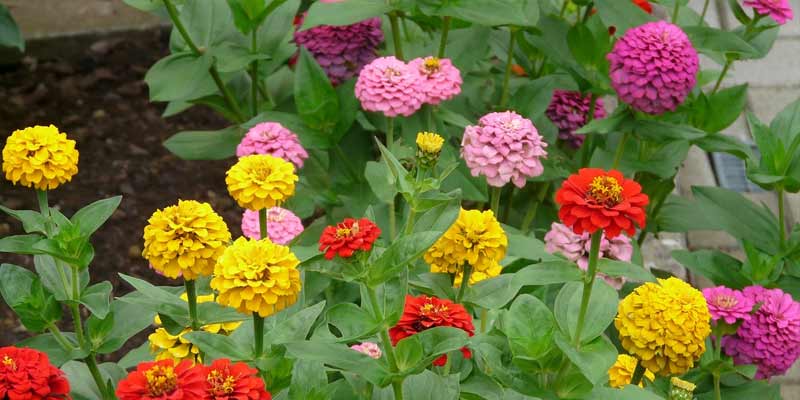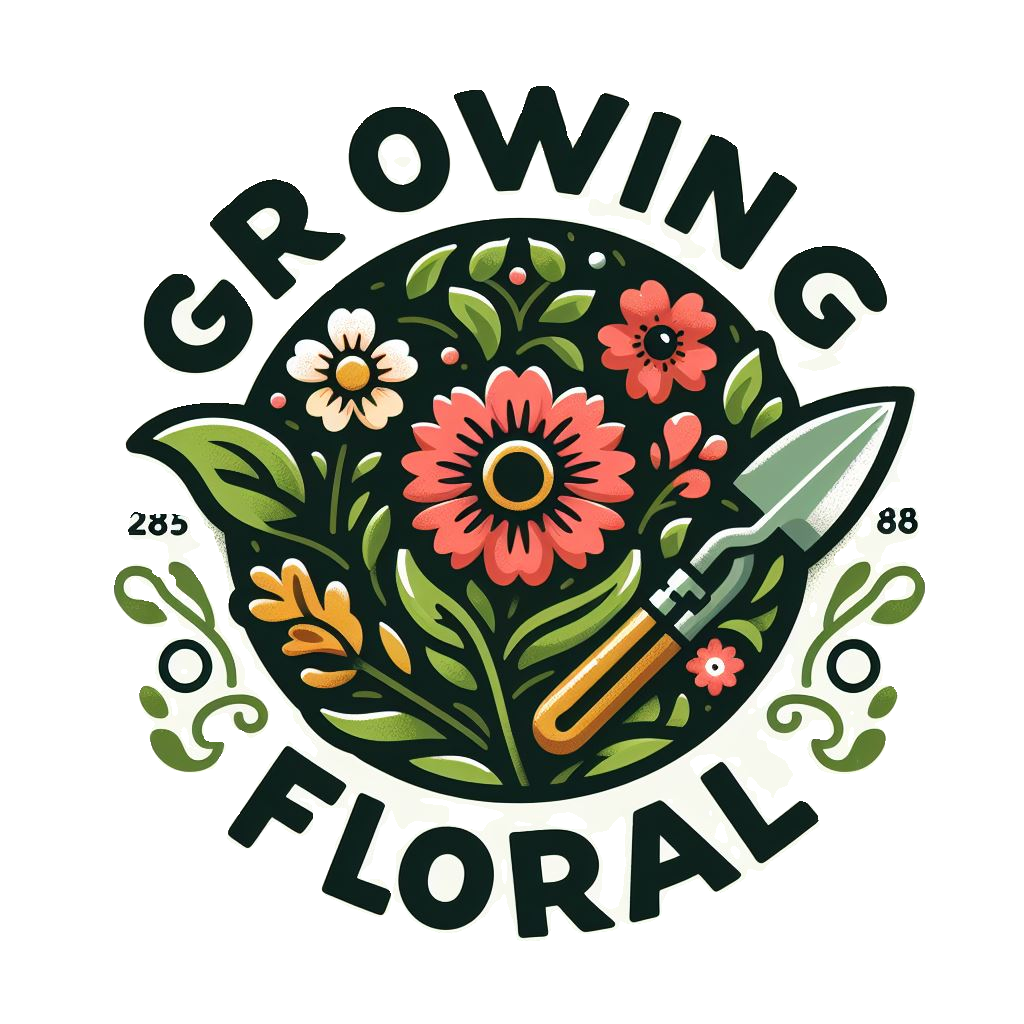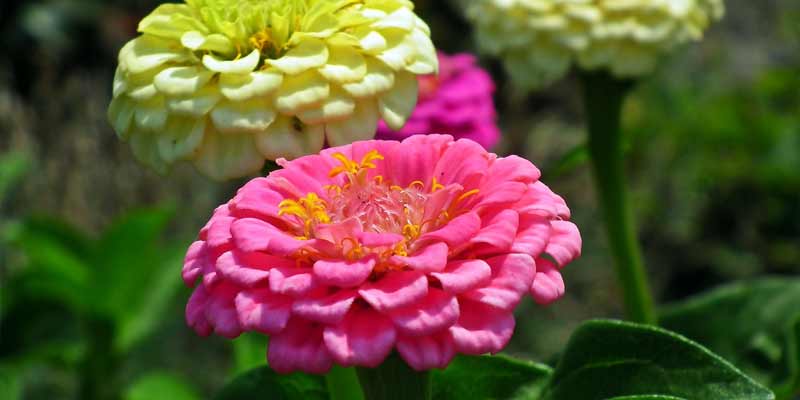Among the most beloved flowers for gardeners worldwide are zinnias, which boast vibrant hues and prolific blooms. These resilient annuals bring joy and color to any landscape; they adorn flower beds, borders, or containers with their beauty. Nonetheless—essential for a bountiful display of zinnias—is an understanding of optimal timing in planting.
This guide delves into the nuances of optimal zinnia planting: it explores precise timing to maximize growth, resilience, and beauty.
Understanding Zinnias
Native to Mexico and Central America, Zinnia elegans—commonly known as zinnias—bear daisy-like flowers with a diverse range of color variations. The petite variety, aptly named “Thumbelina,” stands in stark contrast to the extravagant “Benary’s Giant”; thus offering an array not only in size but also shape that can cater to any preferred garden style.
Moreover, these plants’ capacity to attract pollinators such as butterflies and bees renders them significant assets within eco-friendly landscapes. Mexico and Central America nurture Zinnia elegans, exhibiting daisy-like flowers with diverse color variations
Indeed, their sizes, ranging from the petite Thumbelina to the grandiose Benary’s Giant, offer an assortment suitable for every garden style due to its various shapes. Notably attractive to pollinators such as butterflies and bees as this quality cements them as valuable components within environmentally conscious landscapes.
Factors Influencing Planting Time
Several factors influence the ideal timing for planting zinnias:
Weather: Zinnias, thriving in warm weather and requiring ample sunlight to flourish, dictate the timing of planting; it should align with your region’s last frost date, which is a crucial factor in climate management. For most temperate climates, this typically falls in late spring or early summer.
Soil Temperature: Zinnia seeds optimally germinate within a soil temperature range of 70°F to 80°F (21°C to 27°C); however, premature planting in colder soil conditions may impede this process, even stunting growth.
Growing Season: The growing season of Zinnias typically spans a relatively short duration, often between 60 to 70 days from planting until flowering. Thus, one must strategically time their cultivation for desired blooming periods; this applies whether its intended use is for summer bouquets or fall displays.

Best Time to Plant Zinnias
Your location and local climate conditions largely determine the optimal planting window for zinnias. Consider this general guideline to help you determine:
Spring Planting: In regions characterized by mild winters and early springs, direct sowing of zinnias in garden beds or containers becomes possible once the threat of frost subsides; a successful germination calls for soil temperatures surpassing 60°F (15°C), this is spring planting at its best. For most areas, this falls between late April and early May.
Summer Planting: Gardeners in frost-free, warmer climates can cultivate zinnias during the entirety of summer. Nonetheless, they must vigilantly monitor for intense heat and dry conditions; these may require consistent watering to avert stress-induced wilting.
Fall Planting: Late summer or early autumn presents an opportune time for sowing zinnias in regions characterized by long growing seasons. This strategic timing—allowing the plants to mature before frost onset—not only extends their blooming period into autumn; it also infuses a vibrant burst of late-season color.
Planting Methods
Zinnias can be grown from seeds or transplants, each offering unique advantages:
Direct Seeding: To sow zinnia seeds directly into the garden soil emerges as a cost-effective, straightforward method; one prepares the soil by loosening it to an impressive depth of 6-8 inches (15-20 cm). Any debris or weeds, you promptly remove.
Evenly scatter the seeds, then gently cover them with a thin soil layer; water carefully. Maintain consistent moisture in the soil until seedlings typically emerge within 7 to 10 days.
Transplanting: Gardeners who seek earlier blooms or greater control over spacing may opt to start zinnias indoors for later transplanting. They should begin the process by planting seeds in biodegradable pots or seed trays filled with a lightweight potting mix; this is done approximately 4-6 weeks before the forecasted date of last frost, indoors.
Maintain moderate moisture levels and provide ample sunlight until the seedlings develop true leaves; then, they will be ready for outdoor transplantation.
Care and Maintenance
Once planted, zinnias require minimal care to thrive:
Moisture: Maintain consistent moisture in the soil, avoiding waterlogging particularly during dry spells or droughts. To mitigate fungal disease risks and foster deep root growth, direct your watering at the plant’s base in the morning hours.
Fertilization: Zinnias, being light feeders, typically thrive in average garden soil; yet—incorporating a balanced fertilizer or compost before planting provides essential nutrients for robust growth and plentiful blooms.
Deadheading: Actively practicing regular deadheading–the deliberate removal of spent flowers, not only fosters continuous blooming throughout the season, but it also thwarts seed formation. You may opt for a straightforward approach; simply pinch off faded blooms or employ clean gardening shears to trim spent flower heads.
Conclusion
Understanding the optimal timing and methods for planting zinnias offers a rewarding endeavor, an explosion of color and beauty in any garden or landscape. Gardeners can ensure healthy growth; they can guarantee prolific blooming, a season-long spectacle of zinnia flowers.
The key to this success lies, whether it’s sowing seeds directly into the soil or nurturing seedlings indoors, in aligning your planting schedules with two crucial factors: local climate conditions and seasonal cues. Gardeners and admirers alike will delight in the vibrant charm and enduring appeal of zinnias, as they thrive under proper care and attention.


Leave a Reply